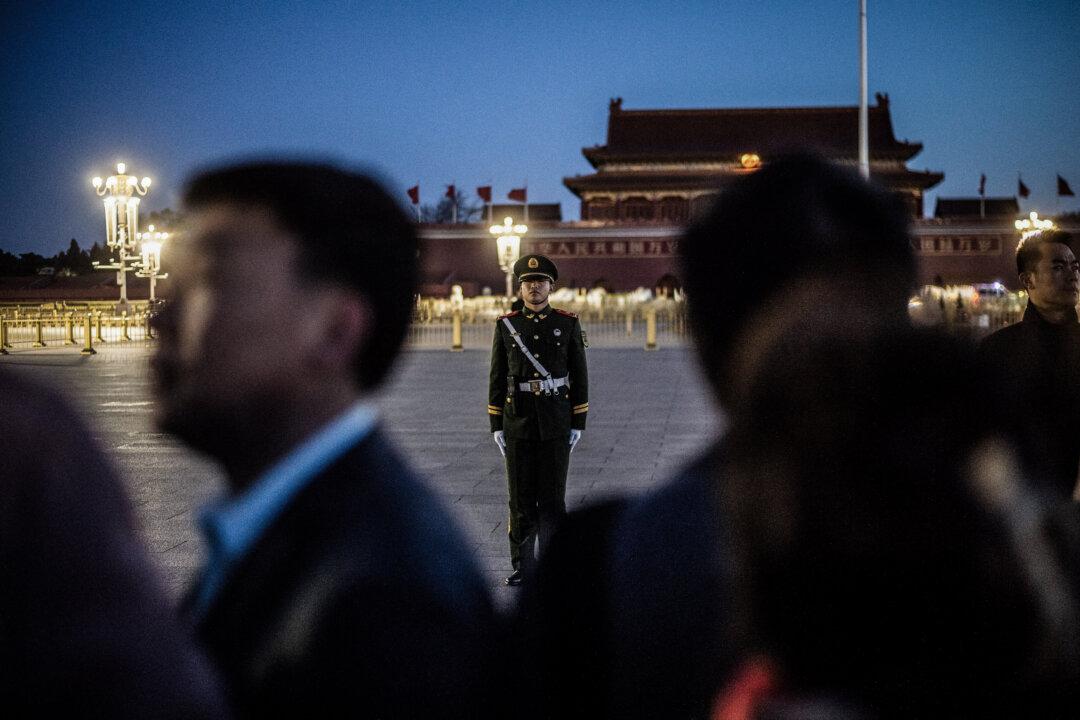As the chikungunya fever outbreak has continued to spread in Guangdong Province, China, Chinese authorities have adopted similar control measures to those they adopted during the COVID-19 pandemic, triggering public fear of a return of citywide lockdowns.
As of July 31, the total number of officially confirmed cases of chikungunya fever reported in Foshan, Guangdong Province, was more than 6,000, according to Chinese state media. The first case was reported on July 8. On Aug. 1, Foshan authorities reported 333 newly confirmed cases in one day.
Chikungunya fever is a viral disease mainly transmitted to humans by mosquitoes. Its symptoms are similar to those of dengue fever. Patients usually experience fever, severe joint pain, muscle pain, headache, fatigue, and rash.
There is no specific antiviral treatment for chikungunya. Deaths from the disease are rare but do occur, especially among vulnerable populations such as those with underlying health conditions.
Confirmed cases have been reported in more than 10 cities in Guangdong Province, according to the Guangdong Provincial Center for Disease Control and Prevention.
On July 31, the Department of Medical Emergency Response of the Chinese regime’s National Health Commission issued an urgent nationwide notice for diagnosis and treatment plans for the chikungunya fever outbreak.
In the notice, the central authorities said there is currently no chikungunya virus vaccine available in China. They said that “quarantine measures must be taken” for suspected and confirmed cases.
Meanwhile, local authorities in Foshan, which is hardest-hit by chikungunya fever, initiated a Level III public health emergency response on July 29.
In China, there are four official response levels: Level I (extremely serious), Level II (serious), Level III (major), and Level IV (general).
Residents in Foshan told local media that they had received an official notice that chikungunya virus PCR screening would be conducted as part of a three-day mass testing effort from July 29 to July 31.
On July 30, the Shabian Village Residents Committee of Lecong Town in Foshan’s Shunde district told local media that the whole town had received notice of mass PCR screening for the chikungunya virus for July 29 to July 31.
Spreading Outside Guangdong
The chikungunya outbreak had spread to Macau and Beijing a few days earlier, according to local health authorities.On July 29, health authorities in Fuzhou, Fujian Province, in southeast China posted an alert about chikungunya fever and dengue fever on their WeChat public account, requiring that “people returning from Foshan must monitor their health for 14 days at home.”
The U.S. Centers for Disease Control and Prevention issued a Level 2 travel alert on Aug. 1, advising people planning to visit China to “practice enhanced precautions” due to a significant chikungunya virus outbreak in Foshan City.
Meanwhile, the World Health Organization (WHO) has raised concerns of another chikungunya virus epidemic. The WHO said it has noticed the same early warning signs as were seen before a major outbreak two decades ago that infected more than 5 million people. That epidemic started in Kenya and spread to countries primarily in the Indian Ocean region, South Asia, and Southeast Asia—and later, to parts of tropical and subtropical Europe and the Americas.
“We are calling for urgent action to prevent history from repeating itself,“ Dr. Diana Rojas Alvarez, medical officer at the WHO, told reporters on July 22. ”There is no particular treatment for chikungunya, so people need to avoid mosquito bites.”
Chikungunya fever can spread rapidly.
“Based on the life habits of the Aedes aegypti mosquitoes, its vector, and the virus’s activity in both humans and mosquitoes, it is estimated that in a community with a high Aedes aegypti population, a single infected person could transmit the virus to over 2,400 people through mosquito bites within 30 days,” Dr. Cheng Yuan-yu, attending physician at Shang-wen Clinic in Kaohsiung, Taiwan, who specializes in infectious diseases, told The Epoch Times on Aug. 2.
If the epidemic continues to worsen, there is a high chance that countries will issue travel warnings, according to Cheng.
“[However,] travel bans are unlikely, as this is a disease with a low mortality rate and a low severe case rate,” he said.
“Prevention measures primarily involve monitoring and tracking incoming travelers for symptoms, particularly body temperature.”
Sean Lin, assistant professor in the Biomedical Science Department at Feitian College and former U.S. army microbiologist, shared a similar assessment, saying he does not think that travel bans will be necessary.
He said “there is no need” for the Chinese regime to impose quarantines “because the virus isn’t transmitted from person to person but rather through mosquitoes.”
“Local authorities can generally control the epidemic by implementing mosquito control campaigns and maintaining good hygiene,” Lin told The Epoch Times on Aug. 2.

This outbreak in China is likely “related to changes in the local mosquito population and their adaptability to the virus,” Lin said, noting that “the Chinese government hasn’t been able to produce a timely research report on this.”
He said some people who are infected by chikungunya virus are at risk of long-term joint pain.
“So generally speaking, ordinary people are still indirectly footing the bill, and pharmaceutical companies are making money out of it.”
CCP’s Mandatory Measures Sparking Fear
Many Chinese citizens have been sharing their experiences of the Chinese Communist Party (CCP) chikungunya control measures on social media. Some fear that the draconian lockdown measures that the CCP employed during the three-year COVID-19 pandemic may come back.A Foshan resident infected with chikungunya virus posted a video on social media claiming to have not been allowed to leave the Longjiang Hospital in Shunde district after having a blood test.
Another resident said in a video post that he has been in forced quarantine in a hospital for four days, with medical staff monitoring him for 24 hours a day. The video showed security guards at the quarantine site.
Others commented on social media about Foshan’s mass testing and “long lines,” reminiscent of the long testing lines during the COVID-19 pandemic.

“Do we need to be quarantined?“ another post reads. ”Will they lock down the city?”
“No way!“ another comment reads. ”Why do we have to wear masks every day again?”
On July 29, CCP officials held a national video and telephone conference in Beijing on chikungunya fever prevention and control. Its control measures include a mosquito eradication campaign. A video on social media showed the Foshan government deploying a large number of armed police officers to “exterminate mosquitoes.”
A Chinese citizen commented on the video: “The armed police has even been deployed. This feels a bit serious.”
Another comment reads, ”Are they planning to lock down Foshan and Shunde?”




